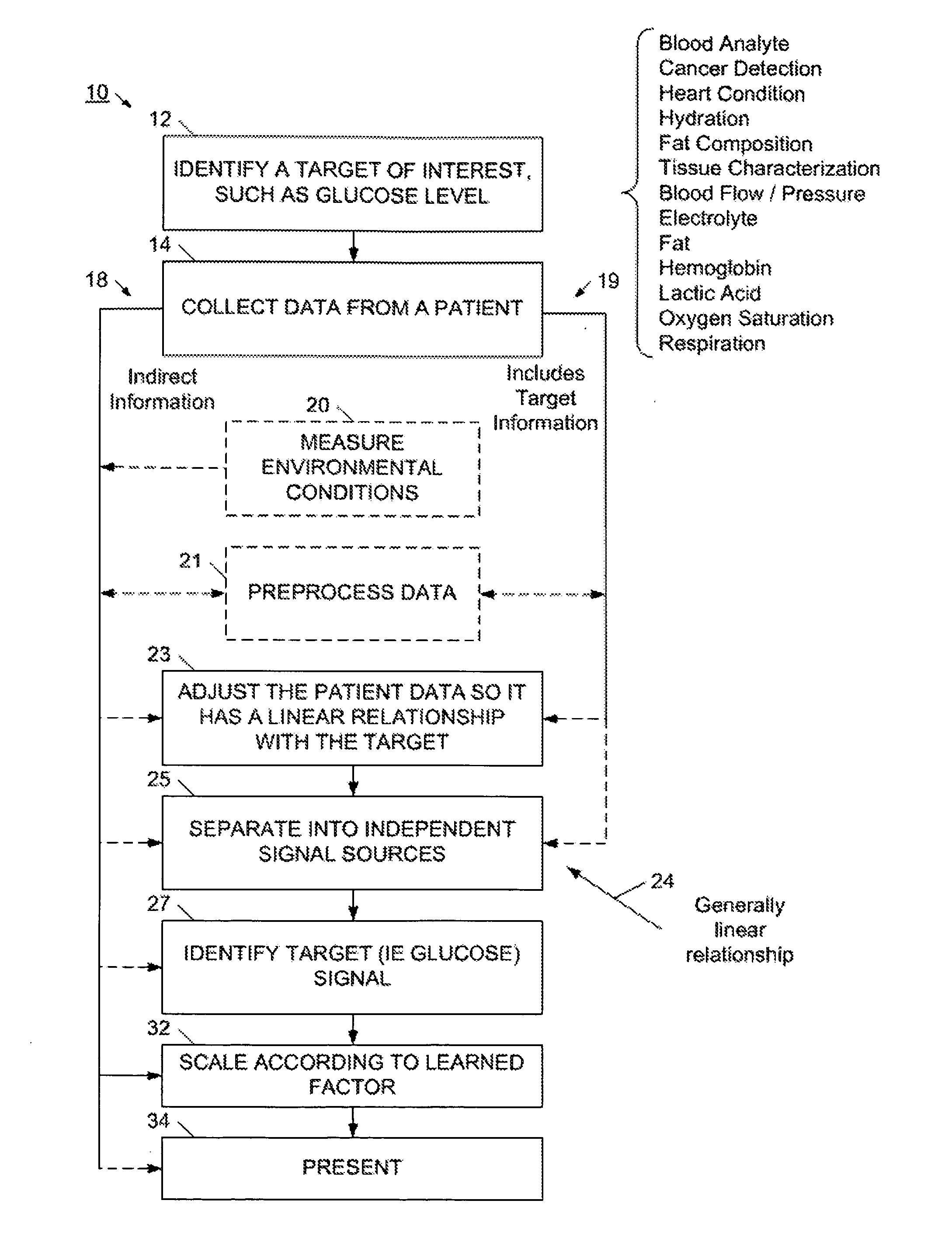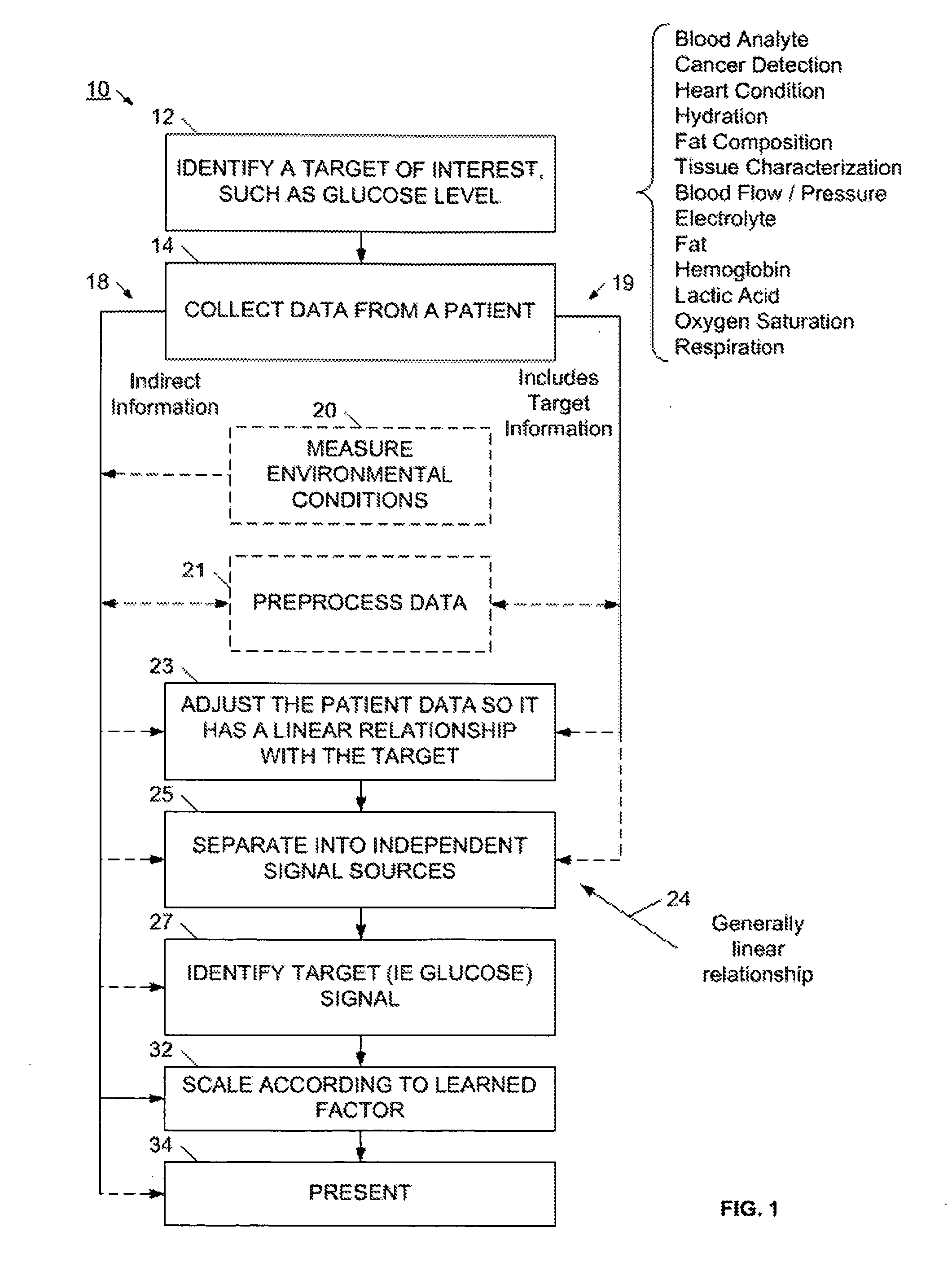Non-invasive characterization of a physiological parameter
a physiological parameter and non-invasive technology, applied in the field of non-invasive devices and methods for characterizing physiological parameters, can solve the problems of relatively insensitive methods and devices and achieve the effects of accurately characterizing a physiological parameter, avoiding pain and dread, and insensitive to fluctuating patient and environment conditions
- Summary
- Abstract
- Description
- Claims
- Application Information
AI Technical Summary
Benefits of technology
Problems solved by technology
Method used
Image
Examples
example 1
[0128]Data Measurement. Various sensors to monitor different physiological properties were used to acquire information about patients by generating one or more data sets. Both healthy and patients with diabetes were tested, although other patients could be easily tested. Different information was acquired using multiple sensors on the skin, particularly the forearm. Although the forearm was tested, the sensors could be placed on different parts of the body or on one discrete point. Eventually, as non-contact sensors are developed, they can be placed adjacent to the skin, although direct contact with the skin is preferred. The measurement data included RF (radio frequency) impedance in conjunction with the temperature (skin and device), humidity and pressure between skin and device. The RF impedance is a primary signal of interest, but environmental conditions such as temperature and humidity also used to calibrate personal and environmental changes.
[0129]Information that was acquire...
example 2
[0141]In a second example, multiple sets of RF data were collected. Several sets of RF data were collected, with each set representing impedance at a different skin depth. In another example, each set represents RF impedance measured at a different frequency, or using a different signal shape, under different positions or placements of the sensors, or over a period of time. Several datapoints of blood analyte information can be analyzed over a period of time because gradual changes typically occur over several minutes. In this way, example 2 uses multiple sets of the same type of data, with each data set having a known direct relationship with glucose or another target physiological parameter. By using multiple sets of the same type of data, reliance on other indirect data may be eliminated or reduced.
example 3
[0142]In a third example, multiple sets of direct data are collected. For example, a set of RF data may be collected, and a set of infrared data may be collected. In this way, example 3 uses multiple sets of different direct data, with each data set having a known direct relationship with glucose or another target physiological parameter. By using multiple sets of direct data, reliance on other indirect data may be eliminated or reduced. It will be understood that many different types of direct data sets may be substituted or used. For example, direct data may include RF impedance data, near infrared data, far infrared data, polarization data, or florescence data, for example. By using multiple direct data sets, increased accuracy and reliability may be obtained, while reducing reliance on other indirect data measurements. FIG. 10 generally shows such a process. Process 450 is similar to processes 50 and 350 previously described, so will not be discussed in detail. In characterizati...
PUM
 Login to View More
Login to View More Abstract
Description
Claims
Application Information
 Login to View More
Login to View More - R&D
- Intellectual Property
- Life Sciences
- Materials
- Tech Scout
- Unparalleled Data Quality
- Higher Quality Content
- 60% Fewer Hallucinations
Browse by: Latest US Patents, China's latest patents, Technical Efficacy Thesaurus, Application Domain, Technology Topic, Popular Technical Reports.
© 2025 PatSnap. All rights reserved.Legal|Privacy policy|Modern Slavery Act Transparency Statement|Sitemap|About US| Contact US: help@patsnap.com



